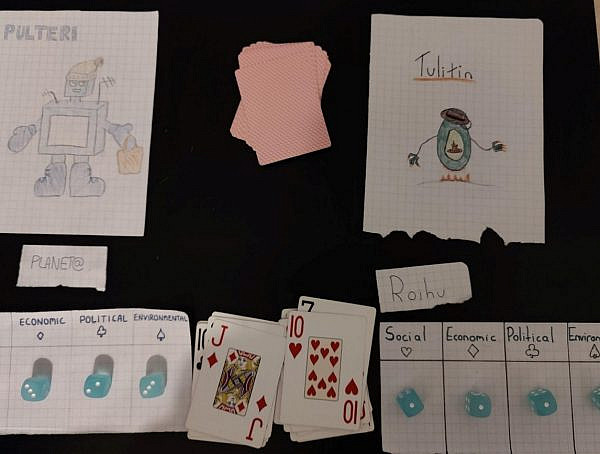In the age of story-driven games and narratives with big emotional impacts, how often do players feel real empathy? With many games utilising narrational techniques with multiple choices and consequences, terms for emotional responses in users are widely used in the industry, but simultaneously, terms such as pity and sympathy are often involved and even confused with empathy.
In their article, Adam Jerrett, Peter Howell, and Neil Dansey (2020) aim to develop a spectrum of emotional response in gaming and differentiating terms used in the industry and academic work. This spectrum can be used to analyse existing games and their mechanics involving empathy and other emotional reactions.
Terms like pity, sympathy, empathy, and compassion are all very alike and sometimes distinction between them is difficult. Before placing these to an emotional spectrum, finding the core elements of each is essential. Pity often has negative connotations as the person pitied is seen as being in a lower position and so must be felt sorry for. Sympathy has some similar qualities to pity but without the negative influence and could be described more as recognising another person’s feelings, understanding them, and having an emotional reaction to them. Empathy can be divided into three types: cognitive empathy is about understanding another person’s feelings without any emotional response, reactive empathy can be grouped together with sympathy as it adds a response to the definition of cognitive empathy. Parallel empathy differs from the rest with the emotional response being the same emotion as the person observed is experiencing: it’s about the connection of sharing an emotion. Compassion adds to the previous with even drastic actions inflicted by the emotional reaction aiming for change for better.
Now, putting these terms into a spectrum with the least emotionally active being on one end, and the most emotionally active being on the other end, pity ends up being the least active followed by cognitive empathy, reactive empathy and sympathy, parallel empathy, and the most active being compassion. This spectrum can now be used to measure the emotional capabilities of games.
Emotional responses are in the game industry seen as signs of good narrative writing and therefore desired, but games with mechanics purely based on it, empathy games, are a rarity. Also parallel empathy and compassion in games overall are seldom highlighted, and are often only present in tiny moments in the gameplay. Pity is quite carefully used in games when the subject of the pity is the player as it can come across as condescending. The Souls games on the other hand have continuously applied pity to the gameplay: ridiculously hard enemies and traps that kill the player instantly messaging how weak the player’s character truly is. With the game Firewatch, the player might start off with feeling cognitive empathy, as in recognising the emotions of the character but not being attached to them, but as the story progresses gets to know the characters better and with the resolution, as the ending has raised some controversy, parallel empathy of betrayal can be felt together with the main character. Compassion is difficult to mimic in video games as it is seen as an outcome of empathy with action and would require extreme interactive design in a game. Some games, such as Kind Words do incorporate compassion as a mechanic.
Whereas the spectrum created can be used to evaluate the emotional progress and capabilities of games, in the end emotional reactions are personal. Every person has their own reactions which are affected by their lives, personalities, and even how they have played the game, so two evaluations on the spectrum can end up being totally different. This tool can still be used for developers to understand the plots and emotional devices used in their games, and to develop the narrational properties of the writing.
Main article: Adam Jerrett, Peter Howell, and Neil Dansey. “Developing an Empathy Spectrum for Games.” Games and culture 16.6 (2021): 635–659. Available at https://doi.org/10.1177%2F1555412020954019
Header image: From game Firewatch. Official promo image, retrieved from Steam. Courtesy of Panic and Campo Santo
You might also like
More from Game Research Highlights
How do you want to do this? – A look into the therapeutic uses of role-playing games
Can playing RPGs contribute positively to your wellbeing? A recent study aims to find out how RPGs are being used …
Eldritch horrors and tentacles – Defining what “Lovecraftian” is in games
H.P. Lovecrafts legacy lives today in the shared world of Cthulhu Mythos and its iconic monsters. Prema Arasu defines the …
Are Souls Games the Contemporary Myths?
Dom Ford’s Approaching FromSoftware’s Souls Games as Myth reveals the Souls series as a modern mythology where gods fall, desires …















